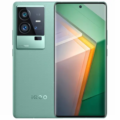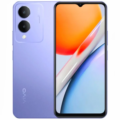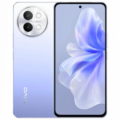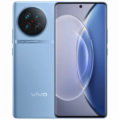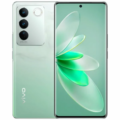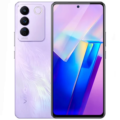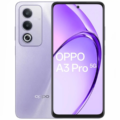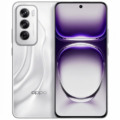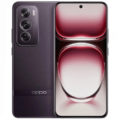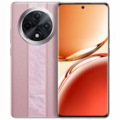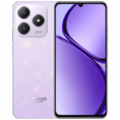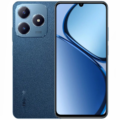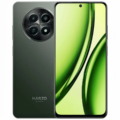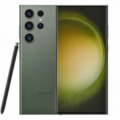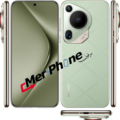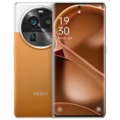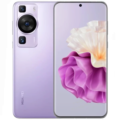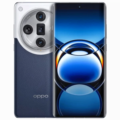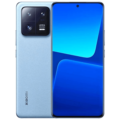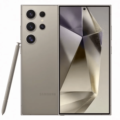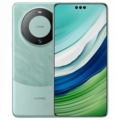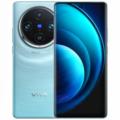Vivo S16e
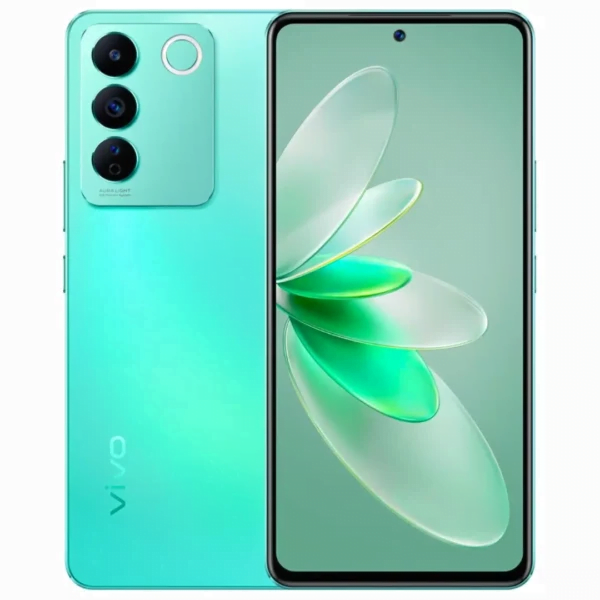
General specifications
| Device type Device type refers to the categorization of hardware or gadgets based on their intended function, design, or capabilities. | smart phone |
| the device name Device name is the unique identifier or label assigned to a specific hardware or electronic gadget for easy recognition and management | Vivo S16e |
| the condition Condition typically refers to the current state or status of an object, system, or individual, often indicating its health, quality, or performance. | It has been announced |
| Targeted markets Targeted markets are specific customer segments or demographics that a business aims to reach with its products or services through tailored marketing strategies | Intended for the Chinese market only |
| Advertisement date The date of announcement of a device is the day when a company officially introduces the product to the public or media, unveiling its features and specifications. | December 2022 |
| Release date The date of issue of a device typically refers to the date when a device is released or made available to customers for purchase or use. | December 2022 |
| Device colors Device colors are the various hues and finishes available for a specific product, giving consumers options to choose their preferred aesthetic. |
• Black • Green • Purple |
Dimensions and structure of the device
| height Height is a measurement of the distance from the base to the top of an object, typically in units such as inches or centimeters, describing its vertical dimension. | 162.5 mm |
| the offer The offer refers to a proposal or opportunity presented to individuals or entities, often outlining terms, products, or services available for acceptance or consideration. | 75.8 mm |
| Thickness Thickness is a measure of the distance between two parallel surfaces or boundaries of an object, describing how thick or thin it is in a given dimension. | 7.7 or 7.8 mm |
| Device weight Device weight is the measurement of how heavy a specific object or gadget is, often expressed in units like pounds or kilograms. | 187.7 or 189 grams |
Networks and slides
| 2G network 2G network, short for Second Generation network, is an early mobile telecommunications technology that allowed voice calls and limited data transfer over cellular networks, primarily using digital modulation. | supports |
| 3G 3G network, or Third Generation network, is an advanced mobile telecommunications technology that provided faster data transfer, enhanced voice quality, and the introduction of mobile internet services compared to 2G networks. | supports |
| 4G 4G network, also known as Fourth Generation network, is a mobile telecommunications technology that offers significantly faster data speeds, improved voice quality, and better support for mobile internet services compared to previous generations. | supports |
| 5G 5G network, or Fifth Generation network, is the latest mobile telecommunications technology that delivers exceptionally high data speeds, low latency, and enhanced connectivity, enabling advanced applications like IoT and augmented reality. | supports |
| GPRS GPRS, or General Packet Radio Service, is a mobile data communication technology used within 2G and 3G cellular networks, allowing for packet-switched data transmission for services like internet browsing and email. | |
| EDGE EDGE, or Enhanced Data rates for GSM Evolution, is a mobile data communication standard that provides faster data transfer rates than traditional 2G networks, bridging the gap between 2G and 3G technologies. | |
| Internet speed Internet speed refers to the rate at which data can be transmitted or downloaded over an internet connection. It is typically measured in megabits per second (Mbps) and determines how quickly you can access websites, download files, stream videos, and perform other online activities. |
• 3G networks up to 42 MB • 4G networks up to 1.2 GB • 5G networks up to 5.1 GB |
| Slide type Slide type" typically refers to a design or mechanism in various devices, often associated with a sliding motion used to reveal or hide components, such as a sliding phone keyboard or a drawer in furniture. | Nano SIM |
| Slide count Number of slides" refers to the quantity of individual presentation slides in a slide deck, such as those used in PowerPoint or other presentation software, to convey information, visuals, or concepts during a presentation. | 2 slices |
the screen
| Screen type Screen type refers to the technology and characteristics used in the display of electronic devices, including factors like LCD, OLED, LED, size, resolution, and touchscreen capabilities. | AMOLED |
| Screen Size Screen size refers to the physical measurement of the display area on an electronic device, typically expressed in inches or centimeters diagonally, and it is a key factor in determining the device's visual real estate and user experience. | 6.62 inches |
| Refresh rate Refresh rate, measured in Hertz (Hz), is the number of times per second that a display refreshes the image it shows. A higher refresh rate, such as 60Hz, 120Hz, or 240Hz, means that the screen can redraw the image more frequently. This can lead to smoother motion and reduced motion blur, which is especially important for activities like gaming or watching fast-paced video content. | 120 Hz |
| screen resolution Screen resolution refers to the number of pixels, both horizontally and vertically, that a display can show. It's typically expressed as a measurement of width x height (e.g., 1920 x 1080 for Full HD), representing the clarity and detail of images and text on the screen. | 1080x2400 pixels (FHD+) |
| Screen dimensions Screen dimensions refer to the physical measurements of a screen or display, usually represented by its width and height in inches or centimeters. These dimensions are used to describe the size and aspect ratio of the screen. | 20:9 |
| Screen ratio Screen ratio, also known as aspect ratio, is the proportional relationship between a screen's width and height. It is typically expressed as a ratio of two numbers, such as 16:9 or 4:3, indicating how wide the screen is in relation to its height. Different aspect ratios are used for various types of displays, such as widescreen TVs, standard monitors, and ultrawide monitors. | 85.9 percent |
| Pixel density Pixel density refers to the number of pixels per unit of screen space, typically measured in pixels per inch (PPI) or pixels per centimeter (PPCM). It indicates how closely packed the pixels are on a display and affects the level of detail and clarity in images and text. Higher pixel density generally results in sharper and more detailed visuals. | 398 pixels per inch |
| Screen brightness You've provided a clear and accurate definition of refresh rate. It indeed plays a crucial role in determining the smoothness of visuals on a display, making it essential for various applications, including gaming and video viewing. If you have any more questions or need further information, feel free to ask! |
1300 lumens (max brightness) |
| Other jobs Other functions on the screen" typically refers to additional features or capabilities that a display or screen can provide beyond simply showing images or content. These functions may include touch or gesture controls, multi-window or multitasking support, on-screen buttons or menus, and interactive elements that enable users to perform various tasks or access specific functions on a device. |
• Always-on display feature • HDR10+ technology • Eye protection mode • Night mode • 16 million colors |
Processor
| Processor name processor name is the designation or label given to a central processing unit (CPU) or microprocessor used in a computer, smartphone, or other electronic device. | Samsung Exynos 1080 |
| Precision Manufacturing precision refers to the degree of accuracy and exactness with which products are produced during the manufacturing process. It encompasses various factors, including the tolerances maintained, consistency in measurements, and the attention to detail in design and production. High manufacturing precision is essential for ensuring that products meet specified standards and perform reliably. | 5 nm |
| Core count The number of cores refers to the individual processing units within a CPU (central processing unit) or a microprocessor. Each core can execute instructions and perform tasks independently, allowing for parallel processing. CPUs with multiple cores, such as dual-core, quad-core, or octa-core, can handle multiple tasks simultaneously, which can lead to improved multitasking and overall performance in computers and mobile devices. | Octa core |
| Processor frequency Processor frequency, often referred to as clock speed, is a measurement of how many cycles a CPU (central processing unit) can execute in one second. It is typically measured in Hertz (Hz) and commonly expressed in gigahertz (GHz). A higher processor frequency indicates a CPU that can execute instructions more quickly, which can lead to faster overall performance in computing tasks. However, it's important to note that other factors, such as the architecture and number of cores, also influence a processor's performance. |
Octa-core: • Single-core 2.8 GHz • Triple-core 2.6 GHz • Quad-core 2.0 GHz |
| GPU A graphics processor, also known as a GPU (Graphics Processing Unit), is a specialized electronic circuit designed to accelerate the rendering of images and videos. Unlike a CPU (Central Processing Unit), which handles general-purpose computing tasks, a GPU is optimized for parallel processing and is particularly well-suited for rendering graphics and performing complex mathematical calculations required for tasks like 3D gaming, video editing, and artificial intelligence workloads. Many computers and mobile devices have dedicated GPUs to improve graphics performance and overall system speed. | Mali-G78 MP10 |
| The Ram RAM, short for Random Access Memory, is a type of computer memory that provides temporary storage for data that the computer is currently using. It is a crucial component of a computer's architecture and plays a key role in its performance. |
• 8 or 12 GB • 8 GB (128 GB) • 8 GB (256 GB) • 12 GB (256 GB) |
| Internal memory Internal memory, in the context of electronic devices like smartphones, tablets, and computers, refers to the built-in storage capacity used for storing data, applications, and the device's operating system. It is also known as internal storage or onboard storage. |
128 or 256 GB |
| Storage type Storage type refers to the specific technology or medium used for storing digital data. Different storage types have varying characteristics, including capacity, speed, durability, and suitability for specific purposes. Here are some common storage types: | UFS 3.1 |
| RAM type RAM type indicates the technology and standards of computer memory modules, influencing performance and compatibility. | LPDDR4x |
| External memory External memory refers to storage devices, such as external hard drives, USB flash drives, and memory cards, used to store data separately from a computer or device's built-in storage. These devices provide additional storage capacity and portability for data backup, transfer, and storage needs. | Not supported |
Operating System
| OS OS, or Operating System, is software that manages computer hardware and provides services for computer programs. It acts as an intermediary between users and the computer's hardware, allowing users to interact with the device and run applications. Popular OS examples include Windows, macOS, Linux, iOS, and Android. | Android 11 |
| user interface A user interface (UI) is the point of interaction between a user and a computer, software application, or device. It encompasses visual elements, controls, and design that enable users to interact with and use the system or application. UI design aims to create an intuitive, efficient, and visually pleasing experience for users. | Origin OS Ocean |
Rear camera
| Camera count The number of cameras refers to the count of camera lenses or sensors on a device, such as a smartphone or digital camera. Multiple cameras can serve various purposes, including capturing photos and videos from different perspectives, enabling features like zoom, wide-angle shots, and depth sensing for portrait mode effects. |
Three cameras: 50 + 2 + 2 MP |
| Camera resolution Camera resolution refers to the level of detail and clarity of images and videos captured by a camera. It is typically measured in terms of megapixels (MP) and represents the number of individual pixels that make up an image. Higher resolution cameras can capture more detailed and sharp photos and videos, which is important for tasks like photography and video recording. |
• 50 MP: Main camera (OIS) • 2 MP: Macro photography • 2 MP: Background blur |
| Aperture size Lens aperture size, often represented as an f-number (e.g., f/2.0), indicates the diameter of the aperture in a camera lens. It influences the amount of light that enters the camera and affects aspects such as exposure, depth of field, and low-light performance. A lower f-number (e.g., f/1.8) represents a larger aperture, allowing more light in and enabling better low-light performance and shallower depth of field for creative effects like background blur (bokeh). |
• 50 MP (F/1.8) • 2 MP (F/2.4) • 2 MP (F/2.4) |
| Camera features Camera features encompass the functions and capabilities of a camera, including settings for exposure, focus, image stabilization, and creative modes. |
• Auto Focus (AF) • Background Blur Mode • Night Shooting Mode • Pro Mode • AI Optimization • Geo-Tagging • Touch Focus • Face and Smile Detection • Panorama • HDR • ISO Settings • Quick Launch • Self-Timer • Continuous shooting • White balance settings |
| video Camera features encompass settings, modes, and capabilities, including video recording, resolution, frame rates, and video-specific functions. |
• 2160P 4K resolution • 1080P FHD resolution • Digital stabilization technology (EIS) • Slow motion photography |
| flash Flash, in the context of a camera, refers to the built-in or external light source used to illuminate a scene when taking photos in low-light conditions or to fill in shadows for better exposure. |
Selfie camera
| Camera resolution Camera resolution refers to the level of detail and clarity of images and videos captured by a camera. It is typically measured in terms of megapixels (MP) and represents the number of individual pixels that make up an image. Higher resolution cameras can capture more detailed and sharp photos and videos, which is important for tasks like photography and video recording. |
16 megapixel |
| Aperture size Lens aperture size, often represented as an f-number (e.g., f/2.0), indicates the diameter of the aperture in a camera lens. It influences the amount of light that enters the camera and affects aspects such as exposure, depth of field, and low-light performance. A lower f-number (e.g., f/1.8) represents a larger aperture, allowing more light in and enabling better low-light performance and shallower depth of field for creative effects like background blur (bokeh). |
F/2.0 |
| Camera features Camera features encompass the functions and capabilities of a camera, including settings for exposure, focus, image stabilization, and creative modes. |
• Background blur mode • Night photography mode • HDR technology • Capture signal • Face and smile detection • Self-timer |
| video Camera features encompass settings, modes, and capabilities, including video recording, resolution, frame rates, and video-specific functions. |
1080P FHD resolution |
| flash Flash, in the context of a camera, refers to the built-in or external light source used to illuminate a scene when taking photos in low-light conditions or to fill in shadows for better exposure. |
Acoustics
| Speaker system External speakers are standalone audio devices used to amplify sound from computers, smartphones, TVs, or other audio sources for improved volume and audio quality. | Supports (single earphone) |
| 3.5mm A 3.5mm port, also known as a headphone jack or audio jack, is a common audio interface found on devices like smartphones, laptops, and audio equipment. It allows for the connection of headphones, speakers, microphones, and other audio accessories using a 3.5mm audio cable. | |
| FM radio FM radio, or Frequency Modulation radio, is a broadcasting technology that transmits audio content over radio waves in the frequency modulation format. It is commonly used for music, news, and entertainment broadcasts and can be received by FM radio receivers, such as car radios and portable radios. | |
| Sound traits Sound characteristics refer to the qualities and attributes of audio, including aspects like pitch, volume, tone, timbre, and spatial attributes (stereo, surround sound). These characteristics define the overall quality and perception of sound in music, speech, and other forms of audio. |
Hi-Res audio |
Telecommunications
| Wi-Fi Wi-Fi is a wireless technology that allows devices to connect to a network and access the internet or communicate with each other. |
• Wi-Fi version 6 • a/b/g/n/ac/ax • Dual-band • Wi-Fi Direct • Hotspot |
| Bluetooth Bluetooth is a wireless technology for exchanging data between devices over short distances, useful for connecting peripherals and accessories. |
• Version 5.2 • aptX HD • A2DP • LE |
| GPS GPS (Global Positioning System) is a satellite-based navigation system that provides precise location and time information to users worldwide. | |
| NFC technology NFC (Near Field Communication) is a short-range wireless technology that enables data transfer and contactless payment between devices in close proximity. | |
| Infrared Infrared is a type of electromagnetic radiation with longer wavelengths than visible light, often used for remote controls and thermal imaging. | |
| USB port USB port is a standard connector on electronic devices for connecting peripherals and transferring data or power, widely used in modern computing. | USB Type-C 2.0 port |
Other specifications
| Sensors Sensors are devices that detect and measure physical or environmental properties, converting them into electrical signals for analysis or action. |
• Accelerometer • Proximity • Compass • Gyroscope • Color temperature sensor |
| Types of protection Types of protection include physical, cybersecurity, legal, financial, and social measures to safeguard individuals, data, assets, and rights from harm or unauthorized access. |
• Fingerprint sensor (integrated into the screen) • Face recognition • Pattern • PIN • Password |
| Box contents Contents of the device box typically include the device itself, charger, cables, user manual, warranty information, and sometimes additional accessories. |
• Device • Charger (66W) • USB Type-C cable • Protection case • Slide pin |
Charging and battery
| Fast shipping Fast shipping refers to expedited delivery services that ensure swift transportation of goods or products to customers, often within a short timeframe. | Supports - 66 watts |
| Charging time Battery charging duration is the time taken for a device's battery to reach full or a desired level of charge, varying based on battery capacity and charger speed. | Charge 50 percent in 19 minutes |
| Battery capacity Battery capacity refers to the amount of energy a battery can store and provide, typically measured in milliampere-hours (mAh) or watt-hours (Wh). | 4600 mAh |
| Battery Type Battery type refers to the specific technology and composition used in a battery, such as lithium-ion (Li-ion), lithium-polymer (Li-poly), alkaline, nickel-cadmium (NiCd), or nickel-metal hydride (NiMH), determining its characteristics and performance. | Li-Po battery |
| Removability Removability refers to the ability to easily detach or take out a component, like a battery, from a device for replacement, maintenance, or upgrades. | Not removable |
Vivo S16e Features:
Vivo S16e Powerful Processor: The phone is powered by a Samsung Exynos 1080 processor built on a 5nm manufacturing process, providing excellent performance and efficiency.
Large AMOLED Display: The device boasts a spacious 6.62-inch AMOLED screen with a hole-punch design for the front camera. It supports HDR10+ technology and offers a high brightness of up to 1300 nits, ensuring vibrant and detailed visuals.
High Refresh Rate: The Vivo S16e supports a smooth and responsive 120Hz screen refresh rate, which enhances the user experience, particularly for gaming and scrolling.
Triple Rear Cameras: The phone features a versatile triple rear camera setup with a 50-megapixel primary camera. It also supports OIS (Optical Image Stabilization) and 4K video recording, allowing for high-quality photography and videography.
Fast Charging: Supporting 66-watt fast battery charging, the phone can be charged to 50% in just 19 minutes, ensuring convenience and minimal downtime.
In-Screen Fingerprint Sensor: The phone comes with an in-screen fingerprint sensor, providing secure and convenient biometric unlocking.
Large RAM and Storage Options: The Vivo S16e offers ample memory configurations with 8GB or 12GB of LPDDR4x RAM and options of 128GB or 256GB of internal storage, ensuring smooth multitasking and storage capacity.
Vivo S16e Disadvantages:
No Stereo Speakers: The phone lacks stereo speakers, which may affect the audio experience, especially for media consumption.
No Ultrawide Camera: The Vivo S16e does not include an ultrawide camera, limiting its versatility in photography.
No MicroSD Card Slot: The phone does not support external storage expansion via a MicroSD card, limiting the storage options to the built-in capacity.
No 3.5mm Audio Jack: The absence of a 3.5mm audio jack might require users to rely on USB-C or wireless audio solutions.
In summary, the Vivo S16e offers a powerful processor, a high-refresh-rate AMOLED display, impressive camera capabilities, and fast charging. However, it lacks stereo speakers, an ultrawide camera, a MicroSD card slot, and a 3.5mm audio jack. The suitability of this phone depends on the user’s specific needs and preferences.
Vivo S16e price
| important note | The price of this device for the cheapest version is in US dollars, with the price converted to local currencies. The price may vary from one country to another for several reasons. |
| Dollar | $300 |
| in Egypt | 9270 pounds |
| In Saudi Arabia | 1125 riyals |
| In the UAE | 1101 dirhams |
| in Qatar | 1092 riyals |
| in Kuwait | 90 dinars |
| in Iraq | 393,000 dinars |
| in Algeria | 40,500 dinars |
| In Morocco | 3042 dirhams |
| in Jordan | 210 dinars |
| in Lybia | 1452 dinars |
| in Syria | 4,065,000 liras |
| in Sudan | 180,000 pounds |
| In Amman | 114 riyals |
| in Bahrain | 114 dinars |
| In Palestine | 1140 shekels |
| in Tunisia | 939 dinars |
| in Türkiye | 8076 liras |

